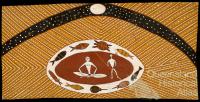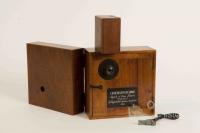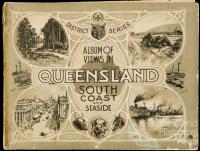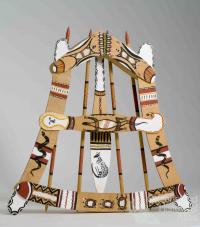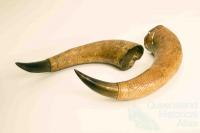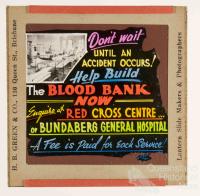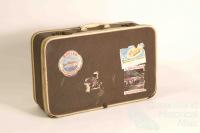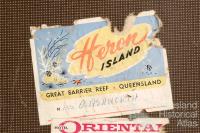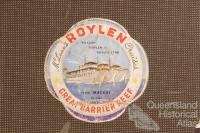- Home
- Quintessential Queensland
- Distinctiveness
- Perceptions
- Perceptions: how people understand the landscape
- From runs to closer settlement
- Geological survey of Queensland
- Mapping a new colony, 1860-80
- Mapping the Torres Strait: from TI to Magani Malu and Zenadh Kes
- Order in Paradise: a colonial gold field
- Queensland atlas, 1865
- Queensland mapping since 1900
- Queensland: the slogan state
- Rainforests of North Queensland
- Walkabout
- Queenslanders
- Queenslanders: people in the landscape
- Aboriginal heroes: episodes in the colonial landscape
- Australian South Sea Islanders
- Cane fields and solidarity in the multiethnic north
- Chinatowns
- Colonial immigration to Queensland
- Greek Cafés in the landscape of Queensland
- Hispanics and human rights in Queensland’s public spaces
- Italians in north Queensland
- Lebanese in rural Queensland
- Queensland clothing
- Queensland for ‘the best kind of population, primary producers’
- Too remote, too primitive and too expensive: Scandinavian settlers in colonial Queensland
- Distance
- Movement
- Movement: how people move through the landscape
- Air travel in Queensland
- Bicycling through Brisbane, 1896
- Cobb & Co
- Journey to Hayman Island, 1938
- Law and story-strings
- Mobile kids: children’s explorations of Cherbourg
- Movable heritage of North Queensland
- Passages to India: military linkages with Queensland
- The Queen in Queensland, 1954
- Transient Chinese in colonial Queensland
- Travelling times by rail
- Pathways
- Pathways: how things move through the landscape and where they are made
- Aboriginal dreaming paths and trading ways
- Chinese traders in the nineteenth century
- Introducing the cane toad
- Pituri bag
- Press and the media
- Radio in Queensland
- Red Cross Society and World War I in Queensland
- The telephone in Queensland
- Where did the trams go?
- ‘A little bit of love for me and a murder for my old man’: the Queensland Bush Book Club
- Movement
- Division
- Separation
- Separation: divisions in the landscape
- Asylums in the landscape
- Brisbane River
- Changing landscape of radicalism
- Civil government boundaries
- Convict Brisbane
- Dividing Queensland - Pauline Hanson’s One Nation Party
- High water mark: the shifting electoral landscape 2001-12
- Hospitals in the landscape
- Indigenous health
- Palm Island
- Secession movements
- Separate spheres: gender and dress codes
- Separating land, separating culture
- Stone walls do a prison make: law on the landscape
- The 1967 Referendum – the State comes together?
- Utopian communities
- Whiteness in the tropics
- Conflict
- Conflict: how people contest the landscape
- A tale of two elections – One Nation and political protest
- Battle of Brisbane – Australian masculinity under threat
- Dangerous spaces - youth politics in Brisbane, 1960s-70s
- Fortress Queensland 1942-45
- Grassy hills: colonial defence and coastal forts
- Great Shearers’ Strike of 1891
- Iwasaki project
- Johannes Bjelke-Petersen: straddling a barbed wire fence
- Mount Etna: Queensland's longest environmental conflict
- Native Police
- Skyrail Cairns (Research notes)
- Staunch but conservative – the trade union movement in Rockhampton
- The Chinese question
- Thomas Wentworth Wills and Cullin-la-ringo Station
- Separation
- Dreaming
- Imagination
- Imagination: how people have imagined Queensland
- Brisbane River and Moreton Bay: Thomas Welsby
- Changing views of the Glasshouse Mountains
- Imagining Queensland in film and television production
- Jacaranda
- Literary mapping of Brisbane in the 1990s
- Looking at Mount Coot-tha
- Mapping the Macqueen farm
- Mapping the mythic: Hugh Sawrey's ‘outback’
- People’s Republic of Woodford
- Poinsettia city: Brisbane’s flower
- The Pineapple Girl
- The writers of Tamborine Mountain
- Vance and Nettie Palmer
- Memory
- Memory: how people remember the landscape
- Anna Wickham: the memory of a moment
- Berajondo and Mill Point: remembering place and landscape
- Cemeteries in the landscape
- Landscapes of memory: Tjapukai Dance Theatre and Laura Festival
- Monuments and memory: T.J. Byrnes and T.J. Ryan
- Out where the dead towns lie
- Queensland in miniature: the Brisbane Exhibition
- Roadside ++++ memorials
- Shipwrecks as graves
- The Dame in the tropics: Nellie Melba
- Tinnenburra
- Vanished heritage
- War memorials
- Curiosity
- Curiosity: knowledge through the landscape
- A playground for science: Great Barrier Reef
- Duboisia hopwoodii: a colonial curiosity
- Great Artesian Basin: water from deeper down
- In search of Landsborough
- James Cook’s hundred days in Queensland
- Mutual curiosity – Aboriginal people and explorers
- Queensland Acclimatisation Society
- Queensland’s own sea monster: a curious tale of loss and regret
- St Lucia: degrees of landscape
- Townsville’s Mount St John Zoo
- Imagination
- Development
- Exploitation
- Transformation
- Transformation: how the landscape has changed and been modified
- Cultivation
- Empire and agribusiness: the Australian Mercantile Land and Finance Company
- Gold
- Kill, cure, or strangle: Atherton Tablelands
- National parks in Queensland
- Pastoralism 1860s–1915
- Prickly pear
- Repurchasing estates: the transformation of Durundur
- Soil
- Sugar
- Sunshine Coast
- The Brigalow
- Walter Reid Cultural Centre, Rockhampton: back again
- Survival
- Survival: how the landscape impacts on people
- Brisbane floods: 1893 to the summer of sorrow
- City of the Damned: how the media embraced the Brisbane floods
- Depression era
- Did Clem Jones save Brisbane from flood?
- Droughts and floods and rail
- Missions and reserves
- Queensland British Food Corporation
- Rockhampton’s great flood of 1918
- Station homesteads
- Tropical cyclones
- Wreck of the Quetta
- Pleasure
- Pleasure: how people enjoy the landscape
- Bushwalking in Queensland
- Cherbourg that’s my home: celebrating landscape through song
- Creating rural attractions
- Festivals
- Queer pleasure: masculinity, male homosexuality and public space
- Railway refreshment rooms
- Regional cinema
- Schoolies week: a festival of misrule
- The sporting landscape
- Visiting the Great Barrier Reef
By:
David Carter As essayist and literary critic Nettie Palmer put it, in 1927, ‘Queensland is notoriously huge: most parts of it are still unknown, except to the people who live in them’. Even southern Queensland was a ‘world of contrasts’, from ‘the coastal country, a world in itself of shores and mountains’ to ‘the surprising Granite Belt with its chill vigour’ and the lands out west. The great diversity of landscapes, climates, settlements and economies that characterises Queensland means an extraordinary diversity in the ways the State has been imagined and depicted.
Queensland has been imagined both as the ‘most Australian’ of Australian territories and simply as ‘different’, in the great cliché both claimed and rejected by Queenslanders themselves. From the subtropical and temperate south-east to the wet tropical north to the arid west, and from remote Indigenous communities to mining settlements and outback townships to coastal ports and the heavily urbanised strip from Noosa to the New South Wales border, its diversity has both encouraged and defeated unifying conceptions of the State, its people and its purpose. Even its main industries occur within or rather create very different landscapes and communities: cattle country, sugar country, mining country, pineapple or banana country, or ‘tropical playgrounds’ for tourists. Each has been imagined as the ‘typical Queensland’ despite their striking differences.
In 1976, Brisbane-born novelist Thea Astley still felt that ‘Queensland ha[d] retained much of its quality as an abstraction, an idea’. In other words, much of it remained ‘imaginary’ or was still to be imagined, despite the rich evocations of locale, climate and community which had by then begun to appear from writers like Astley herself.
Astley was also conscious of the ways in which Queensland was imagined from the outside, ‘disregarded, a joke, a butt’. Queensland was seen as quirky, shabby or reactionary, as the ugly past (the racist, violent frontier) or the ugly future (artificial, corrupt BrisVegas), or as a cultural desert, essentially rural, backward and boring—‘Ladies and Gentlemen, we are about to land at Brisbane airport. Please set your watches back ten years.’ Queenslanders themselves, of course, could share these views, at least about other parts of Queensland or other Queenslanders. But these barbs for the most part have lost their sting and Queenslanders can joke about them (even if daylight saving is still resisted). The growth of population through domestic and international migration, the increasing sophistication of tourist packaging and promotion, government investment in cultural institutions and cultural practitioners, and a new regionalism and ‘festival culture’, have all played a part in enriching how Queensland is imagined and experienced.
Queensland as Australia
Queensland has an ambiguous relation to what might be called ‘national landscapes’, those landscapes that stand in for the nation as a whole. From the late-nineteenth to the late-twentieth century, the one landscape that performed this task more powerfully than all others was the bush or pastoral landscape and Queensland’s west could be imagined as typifying this uniquely Australian environment. The country of drovers or ‘overlanders’ was celebrated in print and song, in popular ballads such as ‘Brisbane Ladies’, which linked Brisbane and the bush:
We’ll rant and we’ll roar like true Queensland drovers,
We’ll rant and we’ll roar as onward we push,
Until we return to the Augathella station,
Oh, it’s flamin’ dry goin’ through the old Queensland bush.
Drovers were key figures in national imaginings of the new Australian ‘type’ believed to be emerging in these distinctive up-country environments, and a whip-cracking cattle drover is one of the illustrations representing Queensland in the Picturesque atlas of Australasia, first published in 1886. These images of men shaping the unique country and being uniquely shaped to it affirmed white possession of the land. The dispossession of Aboriginal peoples and the dependence of the pastoral industry on Aboriginal labour were noted, if at all, in passing.
In his major study of the evolution and spread of ‘the Australian legend’ (the idea that the drovers and shearers of the bush represented the typical Australian), historian Russel Ward remarked that in the late-nineteenth century Queensland was often seen as ‘the most “Australian” and the most nationalistic of all the colonies’. As well as heroic or hard-bitten stories of overlanders, Queensland also has a stake in Australia’s ‘unofficial national anthem’, ‘Waltzing Matilda’. ‘Banjo’ Paterson wrote the words to the song while staying at Dagworth Station, near Winton, in 1895. In more recent times, as Robin Trotter and Belinda McKay point out, the connection between the song and the region has spawned a highway (the Matilda Highway, stretching from the New South Wales border to the Gulf of Carpentaria), a heritage centre (the Waltzing Matilda Centre in Winton), and a festival (the Outback Festival in Winton). Paterson’s ‘Clancy of the Overflow’ turns up in western Queensland, too, ‘Gone a-droving “down the Cooper” where the Western drovers go’.
The Waltzing Matilda story sits alongside the pioneer stories celebrated in another outback heritage centre, the Australian Stockman’s Hall of Fame in Longreach, where celebrations of pioneering progress, skill and endurance sometimes complement and sometimes compete with the underdog mythology of Paterson’s lyrics. A bit further down the highway, yet another way of imagining Queensland’s foundational nation role is embodied in the Australian Workers Heritage Centre at Barcaldine, celebrating working men and women.
Queensland also gave Australia one of its most popular bank of rural stories in the form of Steele Rudd’s On our selection (1899) and its sequels. Rudd’s characters Dad and Dave would go on to feature in stage plays, movies, radio series, comic strips and dirty jokes. Far from the life of free-roaming drovers or radical shearers, Rudd’s stories depicted the life of the struggling small farmer or ‘selector’, drawing on his own experience on the Darling Downs.
Despite Queensland’s contribution to national imaginings, national mythology followed the money, as it were, and travelled south. While Queenslanders in the bush might still claim to represent the real Queensland, the bush that came to be celebrated as essentially Australian was more often the less isolated pastoral and farming lands of New South Wales and Victoria (sheep and wheat appeared on our pre-decimal coins, not cattle). Only in the last decades of the twentieth century was the outback ‘rediscovered’ as the real Australia (as a Longreach tourist officer stated in the early 1990s, ‘The Outback is back in’); but by this time western Queensland had to compete with the ‘Red Centre’ as a truly national landscape.
With the advent of mass tourism, very different Queensland images have also been used to promote both nation and State, mostly coastal images of surf beaches, the Great Barrier Reef and tropical islands, or the rainforests and wilderness areas near the northern coasts. These are attractive images with which many Queenslanders can identify, their appeal extending from the hedonistic pleasures of holidays in the tropics to authentic engagements with a pristine environment. Yet they do not quite carry the burden of representing the uniquely or typically Australian, once carried, perhaps still carried, by the bush or pioneering landscapes of the west. They might even stand for the exotic rather than the typical, if a rather domesticated exotic these days.
Tropical gothic
The tropics were not always ‘domesticated’ or appealing. As Henry Reynolds and David Walker have shown, by the late nineteenth century northern Queensland could be imagined as more Asian than (British) Australian. With its ‘proximity to Asia’– often imagined as if China were on our very doorstep – and its burgeoning mixed race population of Aborigines and Islanders, Chinese, Japanese, Malays, and more, northern Australia could seem the very antithesis of the south, and a dangerous blot on the noble record of British colonisation. The north could be imagined as ‘empty’– still unsettled and uncivilised, still scarcely part of Australia despite what the outline on the map said – but viewed through fears of racial mixing and ‘contamination’ it could also seem threateningly over-crowded. Queensland officially worried about whether white men really could live in the tropics without suffering not merely individual but racial degeneration. As Medical Officer for Tropical Hygiene at the Australian Institute of Tropical Medicine in Townsville, Raphael Cilento in The white man in the tropics (1925) answered yes, for a new racial type was evolving, ‘a distinctive tropical type, adapted to life in the tropical environment’.
The north could also be the site for ‘lost-race romances’ such as David Hennessey’s An Australian bush track (1896). Typically, in this popular late-nineteenth century genre, male English adventurers travel beyond the edges of the known world and have their masculine and racial identities tested, but ultimately affirmed, in encounters with a lost race, remnants of an ancient civilisation often led by a female chief. In Rosa Praed’s different take on the genre, Fugitive Anne: a romance of the unexplored bush (1902), the northern landscape is explored as a site for women’s freedom and passion.
Praed’s fiction often returns to the Queensland she knew as a child and young woman, her fictional Leichardt’s [sic] Land, drawing on memories of Brisbane, the Logan Valley, and Port Curtis, near Gladstone, and on family members’ experiences in western Queensland. While the landscapes of the Logan Valley could be beautiful, their picturesque features are never far from the more forbidding qualities of the sublime:
The waterfall … could hardly be equalled in picturesqueness, as it stole from the black masses of the scrub… The jagged pines gave a certain weirdness to the scene, and the utter absence of any sign of humanity added to its extreme wildness and desolation. (from Outlaw and lawmaker)
Such a landscape could be romantic and inspiriting, but it was also full of menace or mystery in its potential ‘inhumanity’ (something very different from the threats – of dreariness or despair – discovered in the wide open spaces of the western plains). These two sides of the rainforest or wilderness landscape recur in a great deal of Queensland writing, especially that located in the tropical north.
In Jean Devanny’s Sugar heaven (1936), the central character, city-bred Dulcie, responds in equal measure to the disturbing but ultimately liberating power of her political awakening, her sexual awakening, and the lushness and elemental power of the tropical landscape of the sugar country around Tully and Mourilyan. As for Praed, the power of the landscape can upset the proprieties and hypocrisies of conventional society. In Brian Penton’s masculine pioneering or anti-pioneering novel, Landtakers (1934), the relationship to the country is no less powerful, but almost wholly destructive. The main character, Derek Cabell, survives and almost prospers, but in the process, as Patrick Buckridge argues, ‘he is physically coarsened, mentally narrowed and morally brutalised’. More than that, ‘the state of his mind and soul ... is a major component of the Australian psyche’ that Penton believed continued into the present.
Landtakers shows a landscape that is almost gothic, that sometimes seems positively malevolent in its own right not merely the scene for malevolent human action. Imagining Queensland as a place of gothic haunting, guilty secrets, sexual repression, and violence – the other side of paradise – is a surprisingly strong theme in literature. In writings since the 1970s that buried guilt is often associated with violence, past and present, towards Aboriginal peoples or with alienation from the environment as in Andrew McGahan’s The white earth (2004). The ‘uncontrollable fecundity … uncaring seductiveness and casual destruction’ of the tropical or subtropical environment is a powerful image for writers such as Astley or Janette Turner-Hospital (like Praed a long-term expatriate who writes powerfully from her store of Queensland memories). A recent example in a different medium is the French-Australian film, The tree (2010), set around Boonah, where a giant fig tree invades the lives of the characters, destroying their house in a cyclone, both haunting and liberating them.
Locating the local
If Queensland is ‘notoriously huge’ it has not been lacking in writers and artists attuned, through observation and imagination, to the intimate details of local places and communities. Thomas Welsby closely observes the Brisbane River and Moreton Bay, and the Tamborine Mountain writers, including Judith Wright, reveal individuals delighting in the specific local features of topography, flora, fauna, and climate. In Wright’s case, the ‘quiet beauty’ of Mount Tamborine could be ‘deeply embedded in her understanding of what it means to be human’. Kenneth Macqueen reveals something similar in his ‘mapping’ of his farm through his striking watercolours. William Robinson’s art offers a contemporary example.
Close appreciation of locale and atmosphere, of distinctive architecture, topography, physical styles and manners, has also characterised writing about small towns and cities – including Brisbane and the Gold Coast. The latter has an odd place in Queensland images, sometimes taken to typify the State, sometimes as thoroughly atypical. In Matthew Condon’s A night at the Pink Poodle (1995), it is ‘the imagined territory of white robes and champagne and flirting and sex and pyjama parties and bikinis and endless fantasies a hundred kilometres from the office blocks of Brisbane. It became a state of mind.’ Subtropical Brisbane could be imagined as both complacent and corrupt, or as invoked memorably in David Malouf’s Johnno (1975), the watershed novel about the city, as ‘so sleepy, so slatternly, so sprawlingly unlovely!’. But it was something very close to those same qualities – the slatternly and the sprawling – that other writers, and indeed Malouf himself, would later refigure in positive terms as defining the personality, the unique freedoms and rich sensations, of the city. The often sprawling and slatternly wooden Queensland house became a key symbol of the city’s idiosyncratic charms. Margaret Olley’s painting of a Queensland house, Interior IV (1970), featured on the cover of By the book (2007), a literary history of Queensland, captures beautifully the qualities of openness and ‘livingness’ these houses present. A new generation of writers have imagined Brisbane into being as a unique city – a sophisticated metropolis where the suburban street, like Nick Earls’s Zigzag Street (1997), ten minutes from the city centre, can still look like a country town, about to disappear beneath the vegetation. At least this is so for inner city. Brisbane’s sprawling outer suburbs await their storytellers, although Melissa Lucashenko’s Steam pigs (1997) is set in Logan City.
Imagining the future
Queensland has also imagined its future beyond its own borders, as part of the Asia-Pacific region – in economic terms, no doubt, more Asian than Pacific. But ‘Asia’ has its own imaginings of Queensland, from short-lived Japanese investment in hotels and coastal golf clubs, to Chinese investment in cattle, to the large Taiwanese community migrating to xiao Kaohsiung (‘little Kaohsiung’) in Brisbane’s southern suburbs.
The other future we might imagine for Queensland is an Indigenous future. If Indigenous possession of the land was written out of past imaginings of the State, the awareness among non-Indigenous Australians of the land’s deep Indigenous meanings is becoming increasingly present. We are more familiar with the country and language names with which Aboriginal and Torres Strait Islander peoples identify. Through contemporary literature and art more of us are listening to Indigenous stories and tracing their entanglement with our own. Land ownership and land use remain critical issues, moral, legal and political.
Queensland was imagined dramatically as representing the Australian nation in June 1992, from a little-known place beyond the mainland, Mer Island in the Torres Strait, the home of Eddie Koiki Mabo. In a great act of legal imagination, the judges of the High Court ruled that the rights to native title the Meriam people had established on Mer could be extended to the whole Australian land mass. The consequences of this recognition of native title for imagining Queensland are very much part of its future.
References and Further reading (Note):
Thea Astley, ‘Being a Queenslander: a form of literary and geographical conceit’, Southerly 36/3, 1976
References and Further reading (Note):
Patrick Buckridge and Belinda McKay (eds), By the book: a literary history of Queensland, St Lucia, University of Queensland Press, 2007
References and Further reading (Note):
Robert Dixon, Prosthetic gods: travel, representation and colonial governance, St Lucia, University of Queensland Press, 2001
References and Further reading (Note):
William Hatherell, The third metropolis: imagining Brisbane through art and literature 1940-1970, St Lucia, University of Queensland Press, 2007
References and Further reading (Note):
J.S.D. Mellick, Writers’ footprints: a Queensland literary companion, Melbourne, Australian Scholarly Press, 2010
References and Further reading (Note):
Henry Reynolds, North of Capricorn: the untold story of Australia’s north, Sydney, Allen & Unwin, 2003
References and Further reading (Note):
David Walker, Anxious nation: Australia and the rise of Asia 1850-1939, St Lucia, University of Queensland Press, 1999
Date created:
3 December 2010
Related node:
Imagination Keywords:
literatureCopyright © David Carter, 2010


